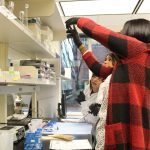First Creek Middle School is TAF’s newest TransformED partner, and at their recent project launch, the heat was on … literally!
The 6th graders at First Creek will spend the next few months learning about thermal energy in Math, ELA, Science, and Social Studies. All of their learning will work to answer the community-centered question: How can we harness energy to help our community? Early next year, scholars will develop thermal containers for an exhibition as part of their project-based learning cycle.
But before all of that, these students had to go through the trial and error of launch day. It is the first step in their project-cycle journey. Students were both excited and nervous with anticipation in the lunchroom that morning. The students went through 6 stations where they were introduced to thermal energy, learned about its uses in their community, and got insight into how they can help their community with thermal energy.
One rather unique experience for students passing through the stations was the ability to fail. Though hesitant to try and fail at first, the day drew out their curiosity and frustration as they had to make predictions about new science concepts and build prototypes that didn’t always work.
Let’s make the rounds of project launch day at First Creek: 10 minutes per station. That’s right, students at First Creek did all of this in under 90 minutes!



